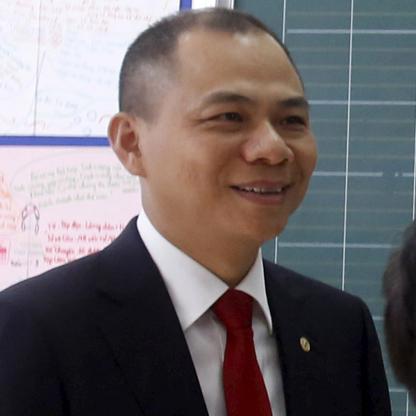Pham Nhat Vuong – Billionaire

Phạm Nhật Vượng (born 1968 in Hanoi) is a Vietnamese property developer and Vietnam’s first billionaire.
Background
Vuong was born in 1968 in Hanoi while his paternal family has origin in Ha Tinh province in central Vietnam. He grew up in Hanoi and graduated from Kim Lien High School in 1985. In 1987, he entered Hanoi University of Mining and Geology, and had been sent to Russia to study in the Moscow Geological Prospecting Institute. He graduated from this university in 1992. After graduating, he got married to Phạm Thu Hương then moved to Kharkiv, Ukraine. In 1993, he developed Technocom, a market leader in dehydrated culinary products in Ukraine, which he sold to Nestle for $150 million in 2009, before returning to Vietnam. Vuong’s first projects in Vietnam were Vinpearl Resort Nha Trang, opened in 2003 and Vincom City Towers (later renamed Vincom Ba Trieu) in central Hanoi, opened in 2004. Vincom went public in 2007. It merged with Vinpearl, Vuong’s luxury resort business, to form VinGroup in 2007. VinGroup is headquartered in its Riverside township in Long Biên District in Eastern Hanoi.
In 2015, Vuong was the richest person in the Vietnam with assets totaling 24.3 trillion Vietnam dong (approximately 1.1 billion USD), which more than quadrupled those of the second richest person, Tran Dinh Long of Hanoi Hoa Phat Corporation. His wife, Pham Thu Huong and sister-in-law Pham Thuy Hang ranked third and fifth respectively. As of June 8, 2016, Forbes estimated his net worth to be 2.1 billion US dollars.
| Phạm Nhật Vượng | |
|---|---|
| Born | August 5, 1968 Hanoi, Vietnam |
| Residence | Hai Ba Trung, Hanoi |
| Nationality | Vietnam |
| Citizenship | Vietnam |
| Alma mater | Hanoi University of Mining and Geology Moscow Geological Prospecting Institute |
| Occupation | property developer |
| Organization | VinGroup |
| Home town | Hanoi, Ha Tinh |
| Net worth | USD 2.1 billion |
| Spouse(s) | Pham Thu Huong |
| Children | 3 |
Source:wikipedia